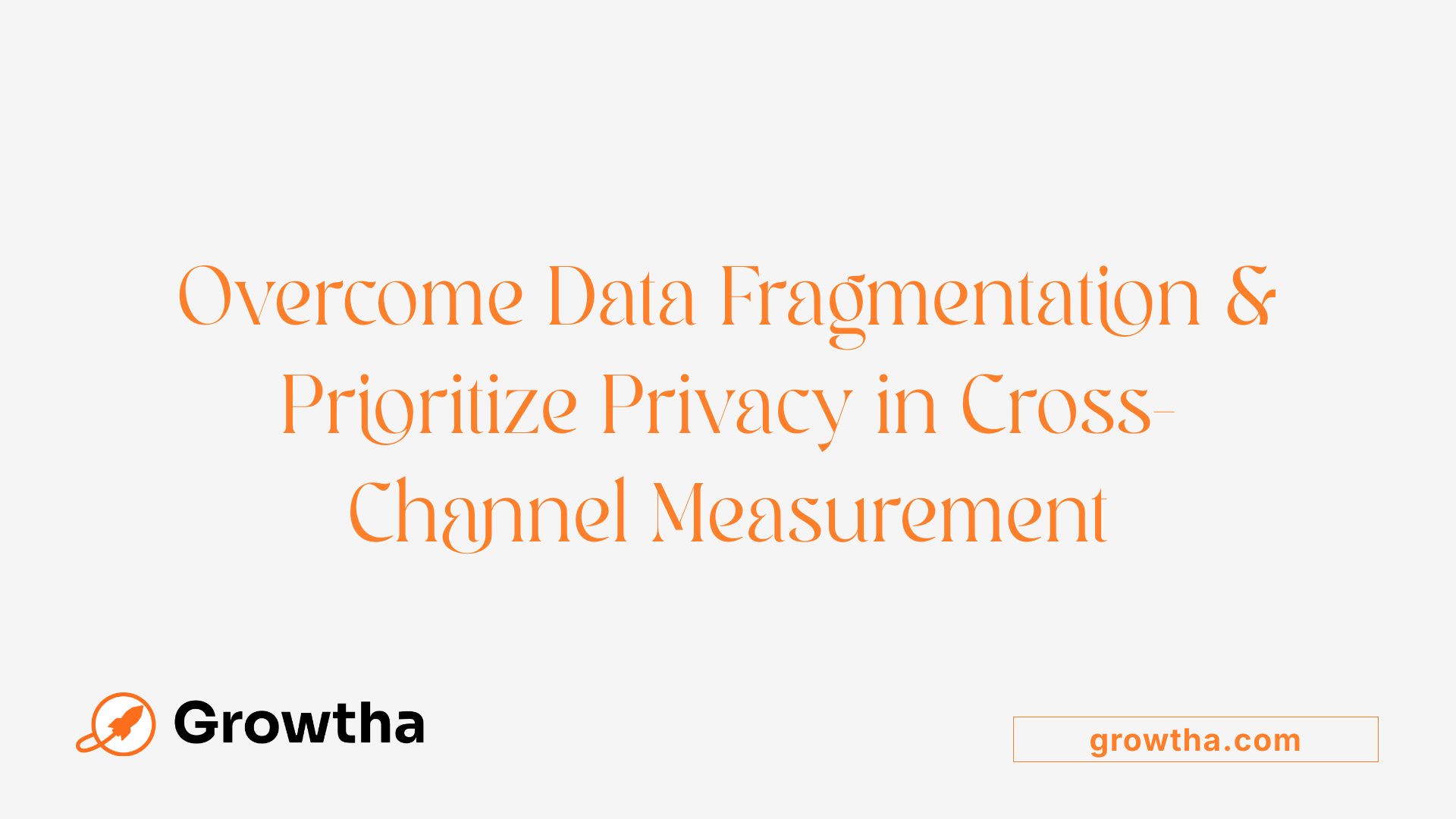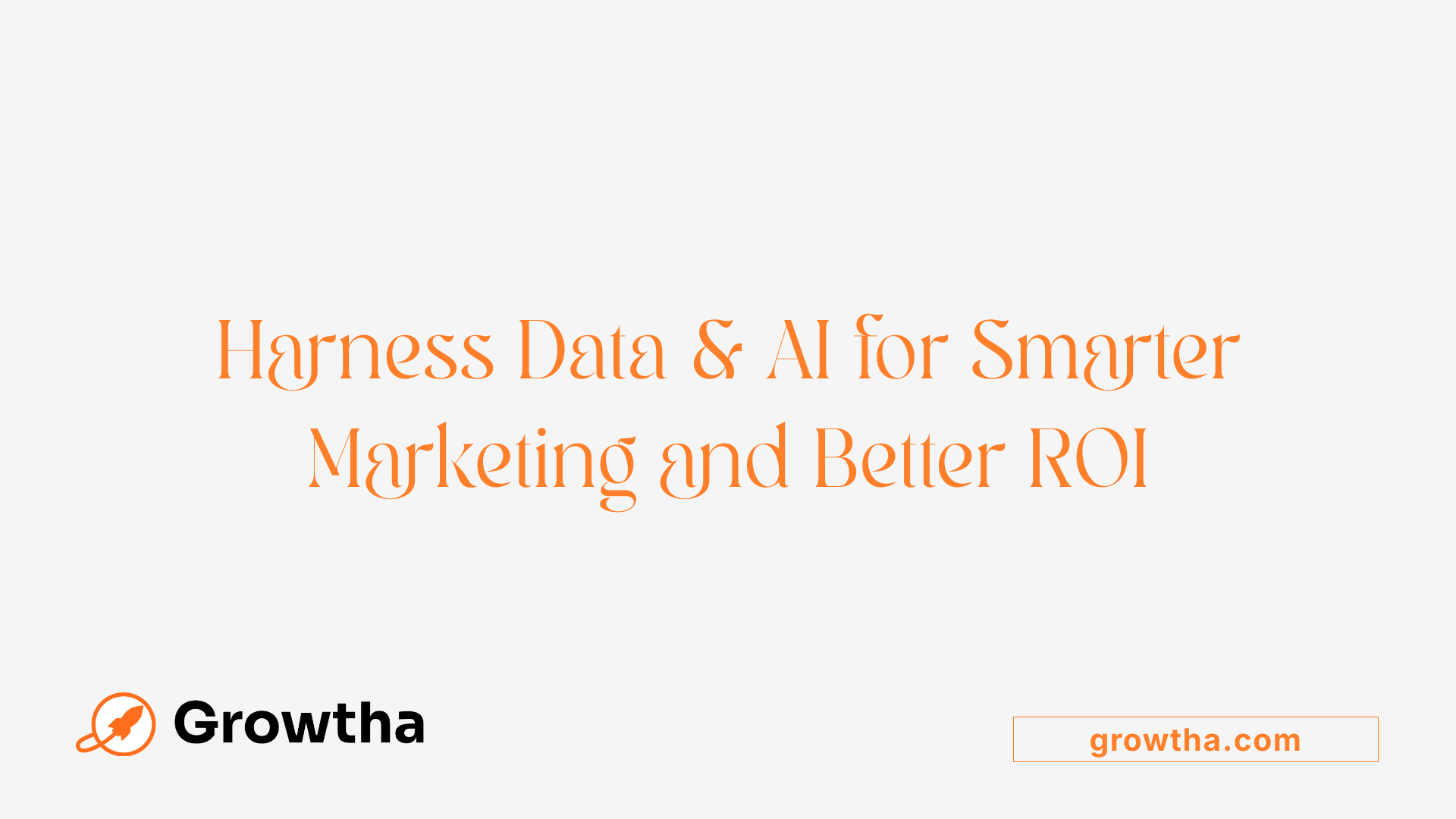Using Cross-Channel Analytics to Measure Campaign Success
Decoding Campaign Effectiveness with Cross-Channel Insights


Using Cross-Channel Analytics to Measure Campaign Success
Harnessing the Power of Cross-Channel Data for Marketing Success
In today's complex digital landscape, understanding how various marketing channels work together to influence customer behavior is more critical than ever. Cross-channel analytics provides marketers with a comprehensive view of the customer journey, enabling precise measurement of campaign success across diverse platforms. This article explores the concepts, tools, strategies, and best practices essential for leveraging cross-channel analytics to optimize marketing efforts, improve ROI, and create seamless, personalized customer experiences.
Understanding Cross-Channel Marketing Analytics

What is cross-channel marketing analytics and why is it important?
Cross-channel marketing analytics involves measuring, analyzing, and integrating data from multiple marketing channels—such as websites, social media, email, paid search, and more—to gain a clear and complete picture of how customers interact with a brand. It captures every touchpoint along the customer journey, helping businesses see which channels contribute most to conversions and loyalty.
This approach is vital because most customers now engage with brands across diverse platforms. Without integrated analytics, marketers risk missing crucial insights into how different channels influence behaviors. Cross-channel analytics enables tracking and attribution of customer interactions, leading to more accurate performance measurement.
By consolidating data, businesses can deliver more personalized and cohesive experiences that foster trust and enhance engagement. It also guides resource allocation: understanding which channels drive revenue allows marketers to optimize efforts and budgets. Ultimately, this comprehensive view supports strategic decisions that improve return on investment and build stronger customer relationships.
Tools and Solutions for Effective Cross-Channel Analytics
What tools and solutions are available for cross-channel analytics?
Effective analysis of customer interactions across multiple marketing channels relies on a range of specialized tools and platforms.
Platform-specific analytics tools such as Google Analytics (especially GA4) and Adobe Analytics are widely used. These tools help track and understand user behavior flow across websites, mobile apps, social media, and other digital platforms. They provide insights into engagement metrics, conversion paths, and attribution models.
To centralize data collection from various sources, businesses utilize data integration platforms like Improvado. These solutions act as ETL (Extract, Transform, Load) tools that gather data from ad networks, CRM systems, and other tools, providing a comprehensive dataset for analysis. Similarly, open-source tools like Matomo are gaining popularity for their privacy-focused approach, capturing data from search engines, social media, and e-commerce sites.
Visualization and interpretation are crucial for making data actionable. Business intelligence platforms such as Tableau, Power BI, and Looker Studio enable marketers to create dashboards that consolidate cross-channel data into understandable reports. These tools often connect to data warehouses like Google BigQuery or Amazon Redshift, facilitating deep dives into customer journeys.
Automation and reporting are essential for keeping insights current. Tools like Coupler.io automate data updates and generate reports, ensuring stakeholders have timely information for decision-making.
Customer Data Platforms (CDPs) play a vital role by unifying customer data from online and offline sources into a single customer profile. They help with personalized marketing and targeted campaigns.
Emerging AI-powered analytics and attribution tools leverage machine learning algorithms to accurately assign credit across channels, optimize marketing spend, and predict customer behavior. These advanced solutions support continuous improvement in cross-channel marketing strategies.
In summary, a combination of analytics platforms, data integration services, BI tools, automation solutions, and AI-driven insights forms the foundation for effective cross-channel analytics, enabling marketers to understand and optimize the entire customer journey.
Measuring Campaign Success Across Multiple Channels

What methods can be used to measure the success of campaigns across multiple channels?
Assessing the performance of marketing campaigns that span various platforms involves multiple strategies. Initially, marketers need to establish clear objectives—such as increasing brand awareness, driving conversions, or boosting customer loyalty—and identify specific KPIs like conversion rates, click-through rates, or customer acquisition costs.
Implementing tracking tools is crucial for capturing data from all relevant channels. Tools such as Google Analytics, HubSpot, or advanced platforms like Waxwing AI help integrate data across websites, social media, email, and offline channels. Creating a centralized data repository ensures that all interactions are analyzed within a unified view.
Understanding each channel's role requires adopting attribution models. For example, last-touch attribution credits the final interaction before a conversion, while first-touch attribution assigns value to the initial point of contact. Multi-touch models, like linear or time-decay, distribute credit across multiple touchpoints to reflect their combined influence.
Beyond simple metrics, in-depth analysis involves measuring the actual business impact. Techniques such as incrementality testing evaluate whether campaigns directly increase sales or engagement beyond baseline levels. Media mix modeling estimates how different channels contribute to overall marketing ROI, considering market trends and external factors.
To maintain a continuous improvement cycle, marketers develop dashboards and regular reports summarizing performance data. This real-time or periodic data review enables ongoing optimization, ensuring campaigns adapt to changing consumer behaviors and market conditions. Employing these methods collectively helps organizations make data-driven decisions, maximizing campaign success across all channels.
Evaluating and Deploying Key Metrics and Attribution Models
When measuring the success of cross-channel marketing campaigns, understanding performance metrics and attribution models is essential.
Typical key metrics include conversion rate, which reflects how effectively campaigns turn interest into actions such as purchases or sign-ups. Customer lifetime value (CLV) estimates the total revenue a customer will generate over their relationship with a brand, helping to assess long-term profitability. Return on ad spend (ROAS) evaluates the revenue generated from advertising efforts relative to the costs, providing insight into campaign efficiency. Additionally, incremental lift measures the additional conversions or revenue attributable directly to marketing activities, isolating their true impact.
To accurately assign credit across multiple touchpoints, various attribution models are used. The common ones include:
- First-touch attribution: Gives full credit to the initial interaction that introduced the customer.
- Last-touch attribution: Assigns all credit to the final interaction before conversion.
- Linear attribution: Distributes credit evenly across all touchpoints.
- Time-decay attribution: Weights recent interactions more heavily, emphasizing the customer’s near-conversion activities.
- U-shaped or W-shaped models: Allocate significant credit to specific key interactions in the customer journey.
- Algorithmic (data-driven) models: Use AI and machine learning to analyze data patterns and dynamically assign credit based on the actual influence of each touchpoint.
Leveraging advanced attribution techniques involves employing AI-powered tools that detect complex interaction patterns and adapt credit assignment accordingly. These models can address issues like high latency, where delayed conversions obscure attribution, and data inconsistencies across channels.
For accurate tracking, platform tools such as Google Analytics 4, HubSpot, or Adobe Analytics are essential. Marketers also utilize UTM parameters appended to URLs to capture detailed source information and customer interactions. Integrating Customer Relationship Management (CRM) systems with analytics platforms further enriches data quality.
Balancing data accuracy with privacy considerations is crucial. Marketers should adhere to regulations such as GDPR and CCPA, ensuring transparent data collection and user consent. Maintaining a high standard of data quality involves regular audits, clean data management, and upgrades to attribution models to stay aligned with evolving privacy laws.
In summary, selecting the right metrics and models depends on the specific campaign goals, customer journey complexity, and available technology. Combining robust data analysis with respectful privacy practices enables marketers to optimize their cross-channel strategies, maximize ROI, and deliver a seamless customer experience.
Implementing Best Practices in Cross-Channel Analytics
What are best practices for implementing cross-channel analytics in marketing campaigns?
To effectively harness cross-channel analytics, marketers should first focus on integrating all relevant data sources. This involves collecting data from various platforms such as websites, social media, email campaigns, paid advertising, and offline channels, then centralizing this information for comprehensive analysis.
Establishing advanced attribution models is crucial. Multi-touch attribution, for example, helps assign credit to multiple touchpoints along the customer journey, providing a clear understanding of each channel’s contribution. Setting specific KPIs like conversion rates, customer lifetime value, and engagement metrics guides measurement and optimization efforts.
Continuous real-time monitoring allows marketers to assess campaign performance on the fly. This enables quick adjustments, such as reallocating budgets toward high-performing channels and refining messaging strategies.
Resource allocation should be driven by insights gained through analytics. By understanding which channels deliver the best ROI, organizations can optimize spending and improve overall efficiency.
Data privacy and compliance are fundamental. Marketers must ensure their data collection and storage practices adhere to regulations like GDPR and CCPA, maintaining consumer trust and avoiding legal issues.
Mapping the entire customer journey aids in personalizing experiences. By understanding how users interact across channels and devices, marketers can craft more relevant content and offers, increasing engagement and conversions.
Campaigns should be regularly tested and refined through A/B testing and predictive analytics. This iterative approach helps identify the most effective messaging and targeting strategies.
Finally, cross-team collaboration enhances campaign success. Sharing insights among marketing, sales, and customer service teams fosters a unified approach to customer engagement, leveraging data-driven insights for strategic decision-making and improved customer experiences.
Integrating Online and Offline Data for a Holistic View

How can online and offline data be integrated for comprehensive campaign analysis?
Connecting online and offline data sources offers a full picture of customer interactions, helping marketers refine their strategies. This integration involves using advanced tools like Customer Data Platforms (CDPs) and attribution models that unify customer profiles across multiple channels.
Offline data such as purchase history, loyalty program info, and survey insights can be linked with online behaviors from cookies, website visits, and social media engagement. Techniques like deterministic matching, which uses unique identifiers such as email addresses and loyalty card numbers, ensure high accuracy.
In cases where unique identifiers aren’t available, probabilistic matching estimates links based on patterns like location, device type, or browsing behavior. Technologies like QR codes and personalized URLs bridge online and offline actions by tracking responses directly.
Conversion APIs help transmit offline event data—such as in-store purchases—back into online analytics systems for attribution analysis. This creates a seamless flow of information, enabling marketers to see how offline responses influence the entire customer journey.
Despite these advances, challenges remain. Data privacy laws like GDPR limit data sharing, and inconsistent identifiers across channels complicate linkage. Nonetheless, creating a unified customer view allows for better measurement of campaign performance and more targeted, personalized marketing.
By integrating these data streams, businesses can optimize their marketing efforts, improve resource allocation, and build stronger customer relationships through a comprehensive understanding of touchpoints across all channels.
Building Effective Cross-Channel Campaign Strategies
How can marketers develop and execute effective cross-channel marketing strategies?
Developing successful cross-channel marketing strategies starts with a deep understanding of the target audience. Marketers should create detailed personas that capture customer preferences, behaviors, and pain points. This foundation allows for tailored messaging that resonates across different platforms.
Consistency in branding and messaging across all channels—such as email, social media, TV, and digital ads—is essential. Creating a cohesive brand voice and visual identity helps reinforce brand recognition and builds trust with customers.
Data insights play a crucial role in optimizing these strategies. By analyzing customer behaviors, engagement metrics, and attribution data, marketers can adjust their campaigns in real time. This approach not only enhances personalization but also ensures resources are allocated to the most effective channels.
Leveraging tactics like retargeting and contextual messaging further elevates campaign performance. These methods enable reaching customers at critical moments with relevant content, increasing the likelihood of conversion.
Effective resource planning involves assigning leadership to oversee cross-channel efforts and deploying marketing automation tools. These technologies streamline workflow, ensure message consistency, and facilitate campaign management.
Mapping the customer journey and optimizing touchpoints are also vital. Understanding how customers interact across channels allows marketers to identify and improve friction points, resulting in a smoother, more engaging experience.
In summary, creating a coherent, data-driven strategy that combines audience insights, consistent messaging, automation, and ongoing optimization is fundamental for impactful cross-channel marketing.
Overcoming Challenges and Ensuring Privacy Compliance

What are the challenges and privacy considerations involved in cross-channel measurement?
Cross-channel measurement is vital for understanding how multiple marketing channels work together to influence consumer behavior and drive conversions. However, it comes with its set of hurdles. One major challenge is data fragmentation across various platforms such as social media, email, website analytics, and offline channels. This fragmentation makes it difficult to compile a unified view of the customer journey.
Another issue is cross-device tracking. Consumers frequently switch devices, so establishing a single customer profile becomes complex. Without accurate device linking, marketers risk missing out on complete insights or misattributing customer actions.
Data siloing—the separation of data in different systems—further complicates the ability to analyze comprehensive multi-channel interactions. These technical issues lead to incomplete or skewed insights, hampering effective decision-making.
Privacy considerations add another critical layer of complexity. Regulations such as the General Data Protection Regulation (GDPR) and California Consumer Privacy Act (CCPA) establish strict rules around user data collection. These laws require explicit consent from users before data collection, limit the use of third-party cookies, and restrict tracking device identifiers without user permission.
To address these challenges, marketers use a combination of approaches. Deterministic matching relies on known user identifiers like login information, while probabilistic matching estimates identities based on behavioral patterns and device characteristics. Often, a hybrid approach combines both solutions to improve accuracy without compromising privacy.
Emerging techniques like data clean rooms provide secure environments where brands can analyze aggregated, anonymized data without exposing individual identities. Behavioral cohorts group users based on shared attributes, allowing for targeting and analytics in a privacy-compliant manner.
Incrementality-based attribution methods focus on measuring the actual impact of each channel on conversions, reducing reliance on invasive tracking. By employing these strategies, marketers can navigate the privacy landscape carefully while maintaining robust measurement capabilities.
Overall, overcoming data fragmentation and privacy hurdles requires a strategic combination of technical solutions, compliance adherence, and ongoing industry education. With privacy-first practices at the core, brands can continue to leverage cross-channel analytics effectively and ethically.
Leveraging Data and AI for Optimization

How can data insights and AI tools be used to optimize marketing efforts?
Data-driven insights and artificial intelligence (AI) are transforming how marketers approach campaign management. By integrating data from multiple platforms—such as social media, email, and website analytics—marketers gain a complete picture of customer behavior and preferences.
AI technologies enable predictive analytics, which forecast future customer actions based on historical data. For example, if a customer abandons their shopping cart, AI systems can trigger real-time personalized offers or reminders, encouraging completion of the purchase.
Campaign automation is another powerful application. AI-driven platforms can manage complex workflows, testing different messaging variants through A/B tests automatically. This allows marketers to identify the most effective content and optimize continuously.
Real-time data streaming helps facilitate immediate decision-making. When integrated with AI, these streams enable dynamic adjustments during active campaigns. For instance, if analytics detect low engagement on specific channels, marketing efforts can pivot instantly to more responsive tactics.
Personalization has become more sophisticated with AI's ability to analyze individual user data and serve dynamic content. This customization increases relevance, fostering stronger customer relationships and enhancing overall campaign performance.
Enhanced customer engagement results from this combination of predictive insights, automation, and real-time responsiveness. Customers experience seamless, tailored interactions across all touchpoints, which can lead to higher conversion rates and loyalty.
In essence, AI and data insights enable marketers to move from reactive to proactive strategies. This shift results in more effective resource allocation, improved return on investment, and a more compelling customer journey.
| Strategy | Technology/Method | Benefits |
|---|---|---|
| Personalized targeting | Predictive analytics, machine learning | Increased relevance and engagement |
| Campaign automation | AI-driven workflows, A/B testing | Efficiency and continuous optimization |
| Real-time decision-making | Streaming data, AI decision engines | Rapid adjustments, improved performance |
| Content customization | Dynamic content, personalization tools | Better customer experiences |
| Engagement optimization | Multi-channel tracking, analytics | Higher conversion and retention |
Through these approaches, businesses can fine-tune their marketing strategies, delivering timely, relevant, and personalized content that resonates with customers. This holistic, intelligent approach maximizes ROI while providing an outstanding customer experience.
Unlocking the Full Potential of Cross-Channel Analytics
Effectively measuring and optimizing campaign success through cross-channel analytics is transformative for modern marketers. By integrating advanced tools, employing best practices, and embracing data-driven insights, brands can create seamless, personalized customer journeys that maximize engagement and ROI. Navigating privacy concerns and overcoming data fragmentation challenges requires continuous innovation and strategic planning. As technology advances, leveraging AI and holistic data integration will become ever more crucial for achieving marketing excellence. Embracing these methodologies not only enhances measurement accuracy but also empowers marketers to make smarter decisions, adapt swiftly to market dynamics, and drive sustainable growth in a competitive landscape.
References
- How to Implement Cross-Channel Analytics: A Guide for Marketers
- The Role of Data Analytics in Optimizing Cross-Channel Campaigns
- Mastering Cross-Channel Attribution for Marketing Success - BL.INK
- Cross-Channel Marketing: Orchestrating Cohesive Campaigns
- The ultimate guide to cross-channel marketing reporting: Step-by-step
- Measure what matters: Key Metrics for Cross-Channel Analytics
- Mastering Cross-Channel Marketing Campaigns: Strategies For ...
- Cross-Channel Marketing: A Complete Guide | Salesforce US







